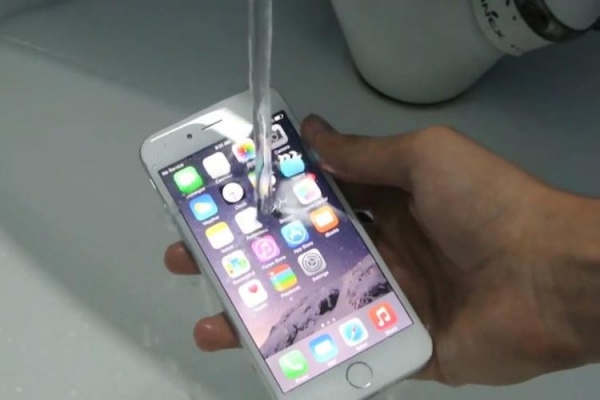According to an Apple patent the water resistant iPhone could be well underway and chances are that it just might come soon. And although Apple does indeed have put a lot of effort by introducing premium materials into the famous smartphone, it appears that this is marked for change. Sony, Samsung and Motorola have long used different technologies to better protect their devices against the ominous liquid, but it is surprising that Apple wants to take a jab at this too. It’s not a bad idea though if it can stick to the minimalistic industrial design approach that worked so well thus far. However if a patent’s technology is registered doesn’t necessary mean that it will actually be made available for usage, but for now we could at least be glad that the Cupertino company is considering this.
If Sony and Samsung decided to go simple by making the whole case waterproof even with the risk of making the exterior dimensions too big, Apple will walk a different road by covering all the inside components with a fine hydrophobic film. This particular method enables the outer dimensions to remain small and unobtrusive all the while offering some reasonable defence against liquids that accidentally reach inside. This method however seems simple but is in fact much harder to implement. Whether you know it or not, Motorola is the first company that used nano-film particles to wrap over the internal components. According to the patent filed by Apple, a process named PACVD will be involved. What is it? The process consists of placing the components in a vacuum-controlled environment filled with a polymeric gas compound of fluoride and carbon.

Are we ready for an Apple product to deflect water?
Then the internal components are charged electrostatically. The gas mentioned earlier is subjected to a high-voltage electric charge which will convert to plasma and the electric charge makes it adhere to the already created electro-magnetic surface of the components. The technological process allows an extremely fine microns-thick membrane that protects the components without a hermetically external casing. This process is quite difficult because it requires also a silicone treatment to be applied over the connectors and soldering. This will insulate those areas that are prone to electrical shorts. Although it sound difficult to implement (and actually is) this process isn’t meant to ensure full protection when immersed into water, instead this is more for mitigate the damages when you’re caught with the device during a rainfall or when liquids accidentally go all over it. The patent in question has been filed a year ago, but so far no product has this technology built into it yet. Maybe the Apple Watch?
